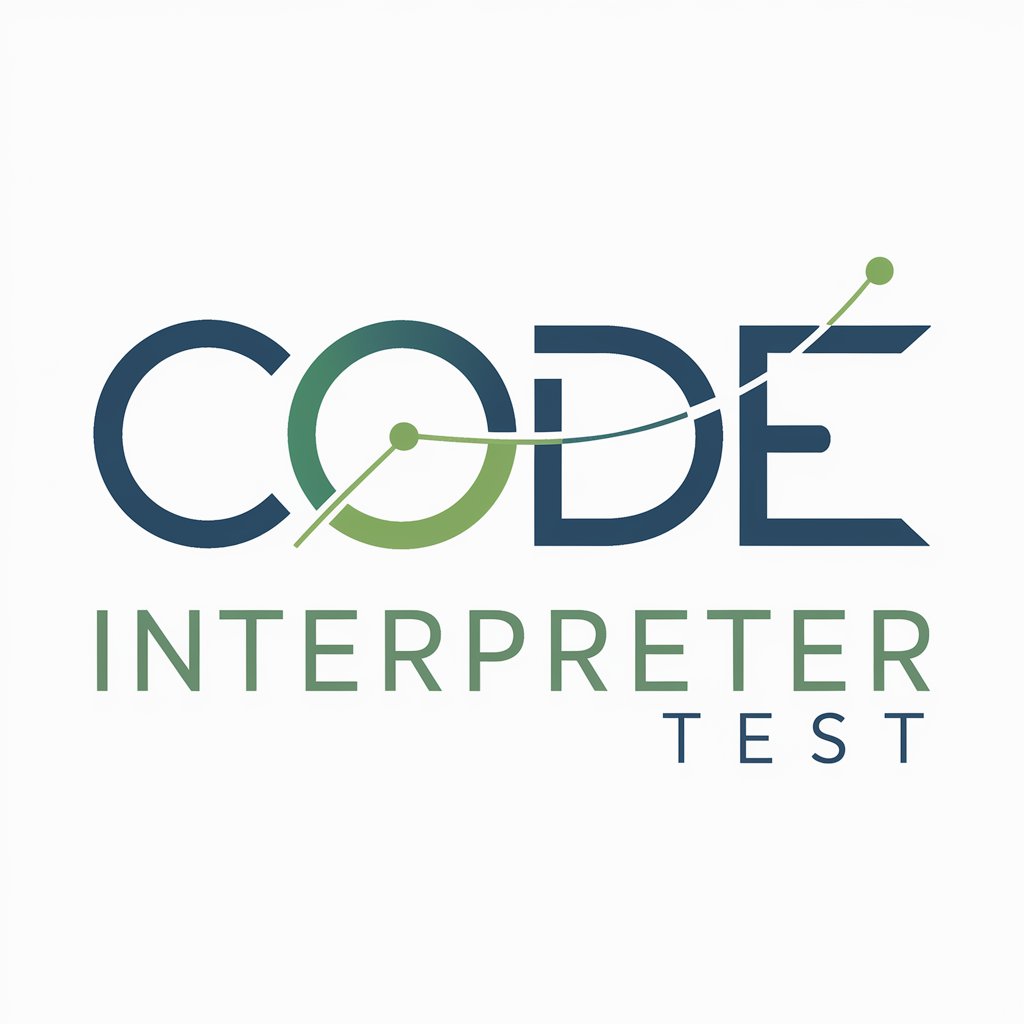
Code Interpreter Test - Advanced Code Analysis

Welcome! Let's dive into your data.
Elevating Code Quality with AI
Analyze the dataset and provide a summary of key findings.
Generate a detailed report on the trends observed in the data.
Visualize the data to highlight important patterns and insights.
Interpret the data and suggest potential improvements or actions.
Get Embed Code
Code Interpreter Test Overview
Code Interpreter Test is specifically designed to interpret and analyze data structures related to the Japanese language, focusing on the co-occurrence, opposition, and evaluation of words within diary entries. It specializes in processing three distinct data sets: ASM_kyouki_all, ASM_taisyogo_all, and ASM_hyokago_all. These datasets contain complex relationships between diary entry identifiers (DIARY_ID) and various word forms, including target words (t_genkei_id, t_name) and evaluation words (h_genkei_id, h_name). The primary function of Code Interpreter Test is to identify and count occurrences of these word forms within the same sentences in diary entries, facilitating advanced linguistic and semantic analyses in Japanese. Powered by ChatGPT-4o。

Primary Functions of Code Interpreter Test
Co-occurrence Analysis
Example
In ASM_kyouki_all, the system analyzes diary entries to identify sentences where target words and evaluation words appear together. For instance, if a diary entry contains the target word '幸福' (happiness) and the evaluation word '感じる' (feel), and they co-occur in the same sentence, Code Interpreter Test will count this as a 'co-occurrence' and note it in the num field.
Scenario
This function is particularly useful for linguistic researchers studying the contextual use of words in diary entries, helping them understand how certain concepts are discussed or perceived in daily reflections.
Oppositional Relationship Analysis
Example
In ASM_taisyogo_all, the system examines pairs of words for oppositional relationships. For instance, if the dataset indicates an opposition between '暑い' (hot) and '寒い' (cold), the system can analyze diary entries to see how often these oppositional pairs are used in close proximity, providing insights into contrasting ideas or feelings expressed in personal diaries.
Scenario
This is particularly valuable for cultural studies and linguistic analysis, offering a window into the emotional or descriptive dichotomies present in personal narratives.
Word Evaluation Analysis
Example
ASM_hyokago_all enables the analysis of words based on evaluative terms. For instance, if a diary entry describes a day using the word '楽しい' (enjoyable) and this term is linked to positive evaluations in the dataset, Code Interpreter Test can quantify and categorize such evaluations, offering a structured overview of sentiments expressed.
Scenario
This function serves sentiment analysis, allowing researchers to quantitatively assess emotions and opinions in diary entries, aiding in fields like market research, psychology, and sociolinguistics.
Target User Groups for Code Interpreter Test
Linguistic Researchers
Researchers focusing on the Japanese language can leverage Code Interpreter Test to dissect and understand the usage, context, and semantics of words in personal diaries. The detailed analysis of word co-occurrence, opposition, and evaluation provides profound insights into language use and cultural expressions.
Cultural Analysts
Individuals studying cultural trends or societal norms can use the insights derived from diary entries to understand the collective mindset, emotional states, and prevalent themes in personal narratives, aiding in comprehensive cultural analysis and research.
Market Researchers
Professionals in market research can utilize the sentiment analysis capabilities of Code Interpreter Test to gauge consumer sentiments, preferences, and opinions, translating these insights into actionable business strategies or marketing campaigns.

Guide to Using Code Interpreter Test
Step 1
Visit yeschat.ai for a free trial without login, also no need for ChatGPT Plus.
Step 2
Select the 'Code Interpreter Test' from the available tools to start your session.
Step 3
Input your specific coding or programming queries directly into the interface.
Step 4
Review the automated responses for accuracy and relevance to your query.
Step 5
Utilize the tool's feedback and suggestions to enhance your coding projects or for educational purposes.
Try other advanced and practical GPTs
3D-Printed Organs
Revolutionizing Transplants with AI

Optimized Database Schema
Design Databases Smartly with AI

Corp Project Name
Crafting Names, Powering Ideas

简单超能_EasySuper (Meditation, 冥想,修仙,第三眼,松果体,修行,灵魂)
Empowering your spiritual journey with AI

AI Times
Tailored News at Your Fingertips

C-Suite
Empowering decisions with AI-driven C-suite expertise

The Spell
Deep Dive into 'Shadow Slave' with AI

Makipag-chat kay Santa Claus
Bringing Christmas Magic to Chat

SQL Stac
AI-powered SQL Optimization Tool

Serenity Guide
Empowering mental wellness with AI

Review of Auditing Tutor
Empowering auditing education with AI

Turing
Empowering multimedia pre-production with AI

Common Questions about Code Interpreter Test
What is the primary purpose of Code Interpreter Test?
Code Interpreter Test is designed to analyze and provide feedback on coding queries, offering solutions and suggestions to improve coding efficiency and correctness.
Can Code Interpreter Test assist with all programming languages?
While Code Interpreter Test is versatile, its proficiency may vary across different programming languages. It's optimized for popular languages but may have limitations with less common ones.
Is Code Interpreter Test suitable for beginners?
Yes, it's beneficial for beginners as it provides clear explanations and suggestions, making it a valuable learning tool.
How does Code Interpreter Test handle complex coding problems?
It breaks down complex problems into manageable parts, offering step-by-step analysis and solutions.
Can this tool be integrated with other software development tools?
Integration capabilities depend on the specific development environment and tools in use. Code Interpreter Test is primarily a standalone tool.






